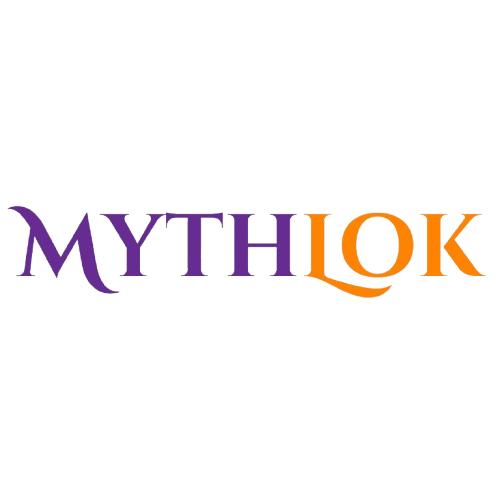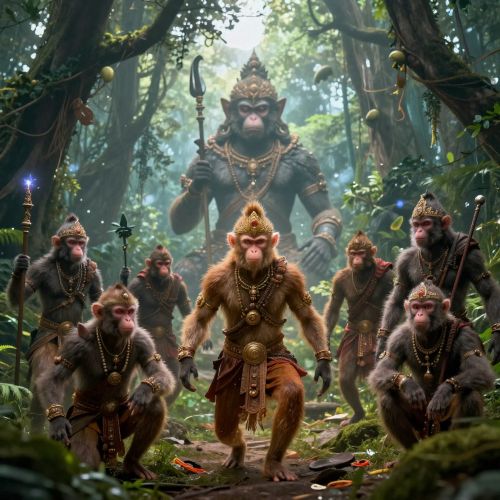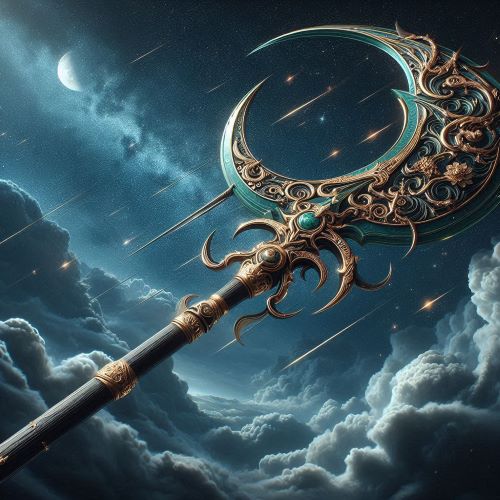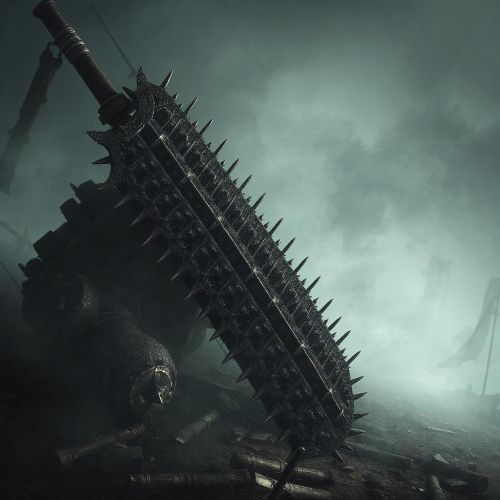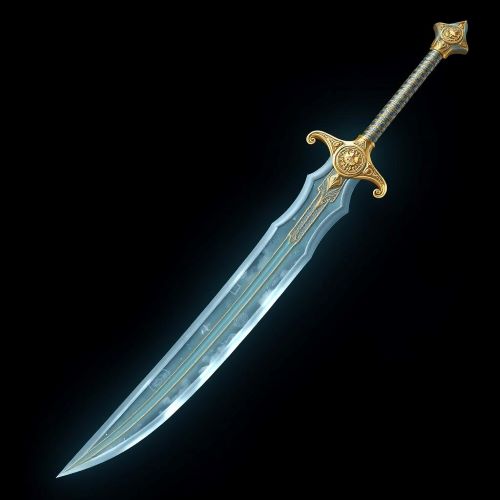Teen Baan : The Infallible Weapon
Teen Baan
Introduction
Indian mythology brims with legendary weapons, each carrying divine power and deep symbolism. Among them, Teen Baan, or “Three Arrows,” stands apart for its unparalleled precision and devastating impact. More than just a set of arrows, this mystical weapon operates with unfailing accuracy, capable of marking, preserving, and annihilating targets. Closely tied to the epic Mahabharata, it plays a crucial role in the tale of Barbarika, a warrior of immense potential. Beyond sheer strength, Teen Baan represents destiny, justice, and the delicate balance of power in war.
Origins
The origins of Teen Baan are deeply tied to the legendary warrior Barbarika, grandson of Bhima and son of Ghatotkacha. Gifted with exceptional martial skills from a young age, Barbarika’s unwavering devotion and rigorous training led him to seek divine blessings. Pleased with his dedication, Lord Shiva granted him three mystical arrows, later known as Teen Baan. Some traditions attribute their origin to Ashtadeva (the Eight Gods) or Goddess Siddhidhatri, while Agni, the God of Fire, bestowed upon him a powerful bow to complement the weapon.
More than just projectiles, these arrows possessed unparalleled power—one to mark targets, another to set the course of attack, and the third to ensure total destruction. Their infallibility made Barbarika a formidable warrior, destined to play a crucial role in the Mahabharata. His mastery over this divine weapon symbolized the fusion of skill, devotion, and cosmic destiny, reinforcing the idea that true power is not just about strength, but also wisdom and righteousness.
Think you know your myths and legends? Dive into the world of ancient stories and test your knowledge with our engaging quizzes on Mythlok!
Powers
The true power of Teen Baan lies in its remarkable precision and strategic functionality. Unlike conventional weapons, it operates as a three-step system, ensuring absolute control over destruction and preservation.
The first arrow acts as a seeker, identifying every target the wielder intends to destroy. Once released, it marks its prey with unfailing accuracy, making escape impossible. The second arrow serves a contrasting purpose—it marks everything that must be spared, creating a safeguard for allies or innocents. The final arrow is the harbinger of destruction, striking down all that the first arrow designated while leaving the protected untouched.
What sets Teen Baan apart is its infallibility. No matter how well-hidden or distant the targets are, the arrows never miss their mark. After completing their task, they return to the quiver, making the weapon reusable and devastatingly effective. This unique ability allowed Barbarika to single-handedly determine the outcome of a battle, reinforcing the weapon’s reputation as a divine instrument of justice.
A well-known tale highlights its precision—Krishna, disguised as a Brahmin, tested Barbarika by challenging him to bind all the leaves of a tree. As the first arrow sought out every leaf, Krishna slyly hid one under his foot. Yet, the arrow still marked it, proving that even the subtlest concealment could not deceive Teen Baan’s divine accuracy.
Owners/Users
Barbarika was the sole wielder of the Teen Baan, a weapon that perfectly matched his exceptional skills and unwavering sense of justice. Born into a lineage of mighty warriors, he combined natural prowess with intense training and divine blessings. His devotion to Lord Shiva earned him the three infallible arrows, making him one of the most formidable warriors of his time.
However, his potential to change the course of the Kurukshetra War led to divine intervention. Barbarika had taken a solemn vow to fight for the weaker side, a principle that, in a constantly shifting battle, would result in the annihilation of both armies. Foreseeing this catastrophic outcome, Krishna, disguised as a Brahmin, requested Barbarika’s head as an offering. Understanding the divine purpose behind the request, Barbarika willingly sacrificed himself, demonstrating unparalleled selflessness.
Before his sacrifice, he expressed a final wish—to witness the great war. Krishna honored this by placing his severed head atop a hill, allowing him to observe the entire battlefield. Though he never used Teen Baan in combat, his legend endures as a symbol of sacrifice, dharma, and the weight of divine destiny.
Instances used
Although Barbarika never wielded Teen Baan in battle, its potential impact is evident in mythology. The weapon’s unparalleled precision and destructive capability made it a strategic tool, capable of annihilating entire armies while sparing chosen individuals. Barbarika’s demonstration—marking all the leaves of a tree with a single arrow—proved its infallible accuracy. If he had joined the Kurukshetra War, he could have ended it almost instantly, but his vow to fight for the weaker side would have led to a chaotic and unpredictable outcome.
Recognizing this, Krishna devised a test to assess the weapon’s power. Disguised as a Brahmin, he asked Barbarika to showcase Teen Baan’s abilities. Witnessing its devastating potential, Krishna realized that Barbarika’s presence on the battlefield would disrupt the war’s balance. To prevent such an imbalance, he requested Barbarika’s head as a sacrifice. Understanding the divine intent, Barbarika accepted his fate. His severed head, placed on a hill, bore silent witness to the great war.
Though never used in combat, Teen Baan remains one of mythology’s most formidable weapons, representing not just raw power but the wisdom needed to wield it responsibly. Its legend underscores the delicate balance between strength, morality, and destiny in the grand design of dharma.
Frequently Asked Questions
Lorem ipsum dolor sit amet, consectetur adipiscing?
Lorem ipsum dolor sit amet, consectetur adipiscing elit. Praesent convallis vestibulum justo, ac tincidunt nunc vehicula quis. Nullam id dolor quis orci malesuada feugiat. Curabitur aliquet libero at urna ullamcorper, ac ultricies nulla dapibus.
Lorem ipsum dolor sit amet, consectetur adipiscing?
Lorem ipsum dolor sit amet, consectetur adipiscing elit. Praesent convallis vestibulum justo, ac tincidunt nunc vehicula quis. Nullam id dolor quis orci malesuada feugiat. Curabitur aliquet libero at urna ullamcorper, ac ultricies nulla dapibus.
Lorem ipsum dolor sit amet, consectetur adipiscing?
Lorem ipsum dolor sit amet, consectetur adipiscing elit. Praesent convallis vestibulum justo, ac tincidunt nunc vehicula quis. Nullam id dolor quis orci malesuada feugiat. Curabitur aliquet libero at urna ullamcorper, ac ultricies nulla dapibus.
Lorem ipsum dolor sit amet, consectetur adipiscing?
Lorem ipsum dolor sit amet, consectetur adipiscing elit. Praesent convallis vestibulum justo, ac tincidunt nunc vehicula quis. Nullam id dolor quis orci malesuada feugiat. Curabitur aliquet libero at urna ullamcorper, ac ultricies nulla dapibus.
Lorem ipsum dolor sit amet, consectetur adipiscing?
Lorem ipsum dolor sit amet, consectetur adipiscing elit. Praesent convallis vestibulum justo, ac tincidunt nunc vehicula quis. Nullam id dolor quis orci malesuada feugiat. Curabitur aliquet libero at urna ullamcorper, ac ultricies nulla dapibus.
Watch
Source
Bhattacharya, Pratip. The Story of Barbarika: The Super Archer Who Witnessed the Mahabharata War. Rupa Publications India, 2019.
Singh, J. P. Weapons and Warfare in Ancient India. Anmol Publications, 2005.
Mahabharata, Book of Bheeshma. Translated by Kisari Mohan Ganguli, 1883–1896. Sacred Texts. .
Amar Chitra Katha. “Divine Weapons from Mythology.” amarchitrakatha.com
AstroVed.com. “10 Most Powerful Astra In Ancient Hindu Epics.” astroved.com, June 01, 2021.
Bhatia, Gaurav. “”IRON DOME” (ISRAEL) & “TEEN BAAN” (MAHABHARATA) – LinkedIn.” linkedin.com, May 17, 2021.
Glorious Hinduism. “Celestial Weapons.” glorioushinduism.com, November 05, 2016.
MSN.com. “The legend of Khatu Shyam and why he is the most revered form of Krishna.” msn.com, November 12, 2024.

